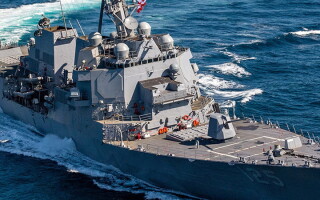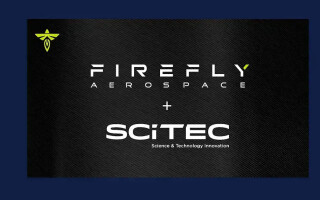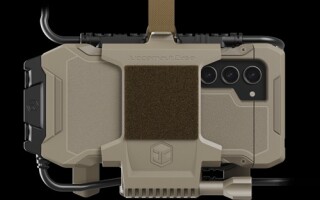Managing next-generation open standard vehicle electronics architectures
StorySeptember 16, 2019
The new IP-based networking architectures being integrated into military ground vehicles are able to unify the communications and shared hosting of services that used to require discrete hardware devices. These network architectures are frequently derived from enterprise-class functions leveraging the robust networking capabilities, cybersecurity maturity, and development pace, plus the innovation, research, and development developed for the commercial sector. These trends promise significant technology cost savings and an increased pace of modernization, but they also introduce complexity with respect to usability and manageability.
Newer on-vehicle integrated networks will be composed of heterogeneous networks (including functions such as routing, switching, timing/A-PNT, encryption, cybersecurity, voice/video/data integration, remote control, sensor integration, logging, and more) in the form of software and equipment from multiple commercial vendors. Many networks have enormous feature sets in order to meet emerging interoperability and cybersecurity requirements for Department of Defense (DoD) systems and will require a level of training and expertise for operation and maintenance that far exceeds available specialists.
In recent years, major efforts have been undertaken to develop comprehensive “standards-based communication,” such as Vehicular Integration for C4ISR/EW Interoperability (VICTORY). These efforts address interoperability issues, databus functionality, and standardized messaging services for interconnected system components. But the resulting standards don’t typically address the network operation, configuration, and management challenges of hybrid (multimedia, multiclassification, multiplatform) DoD-ready networks themselves. Going forward, the complexity, downtime, and configuration errors in current and next-generation tactical and expeditionary command-and-control (C2) networks must be reduced.
An intuitive cross-platform solution would enable collaborative management between lightly trained operators plus on-platform network situational awareness in disconnected, intermittent, or limited WAN conditions. The solution should also be able to simultaneously provide full control from higher echelons that can be staffed with a limited number of experts that provide technical assistance across large numbers of remote platforms. In short, system designers need a robust communications management software solution for ground vehicle networks.
The ideal solution will consolidate the management plane of networks into a “single pane of glass,” regardless of the type of technology or vendor, and support distributed, hierarchical, and efficient management of network attached nodes on multiple platforms and at multiple tiers. The many benefits of this approach include significant improvements for tactical settings and reduced command-post setup time. It also enables new classes of communication applications while limiting management complexity and training burdens for ground vehicle and tactical networking programs.
During the NDIA [National Defense Industrial Association] Ground Vehicle Systems Engineering and Technology Symposium, held during August 2019, Pacific Star Communications (PacStar) held the first live demonstration of a commercial off-the-shelf (COTS)-based management solution for open standard vehicle electronic components through the VICTORY framework. The demo – which showed network management planes consolidated into a “single pane of glass” dashboard – featured PacStar’s IQ-Core Network Communication Management (NCM) software with Remote Operations and Management (ROAM) capability running on a Curtiss-Wright DuraCOR mission computer, that itself managed a DBH-670 Digital Beachhead Ethernet switch and vehicle management computer.
The user interface of the IQ-Core Software, adoptable to the VICTORY framework on ground vehicles, includes a dashboard with auto-generated network diagrams showing the logical structure of hierarchical nodes. It automates deployment of network planning and configuration files across the network, ensuring consistent configuration of all network devices.
The software enables centralized management of distributed network nodes at multiple tiers in a hierarchical manner. It also enables secure wireless networking to integrate vehicle networks and C2 networks, with support for classified wireless communication and PKI secure key management using open architecture off-the-shelf NSA/Central Security Service (NSA/CSS)-approved Commercial Solutions for Classified (CSfC) encryption components.
The “single pane of glass” dashboard approach addresses today’s critical need to simplify and improve configuration control, management, and situational understanding of ground vehicles by overlaying management tools on interoperable network-based standards.
David Jedynak is Program Director, A-PNT Program Office, for Curtiss-Wright Defense Solutions; Charlie Kawasaki is Chief Technical Officer of PacStar; David Gregory is Director, Strategic Initiatives for PacStar.
Curtiss-Wright Defense Solutions
www.curtisswrightds.com
Pacific Star Communications (PacStar)
www.pacstar.com









